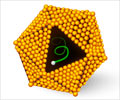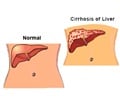
The study, published in the journal Nature Medicine, could help heal livers affected by diseases such as cirrhosis or chronic hepatitis.
Scientists were able to unpick the process of how different cells in the liver are formed.
When the liver is damaged it produces too many bile duct cells and not enough cells called hepatocytes, which the liver needs to repair damaged tissue.
They found they could increase the number of hepatocyte cells – which detoxify the liver – by encouraging these cells to be produced instead of bile duct cells.
Understanding how liver cells are formed could help to develop drugs to encourage the production of hepatocytes to repair liver tissue. This could eventually ease the pressure on waiting lists for liver transplants.
Advertisement
Liver disease is the fifth biggest killer in the UK. There are almost 500 people waiting for a liver transplant, compared to just over 300 five years ago.
Advertisement
Dr Luke Boulter, of the University of Edinburgh's MRC Centre for Regenerative Medicine and first author on the paper, said: "This research helps us know how to increase numbers of cells that are needed for healthy liver function and could pave the way for finding drugs that help liver repair. Understanding the process in which cells in the liver are formed is key in looking at ways to repair damaged liver tissue."
Dr Rob Buckle, Head of Regenerative Medicine at the MRC, said: "Liver transplants have saved countless lives over the years, but demand will inevitably outstrip supply and in the long term we need to look beyond replacing damaged tissues to exploiting the regenerative potential of the human body. The MRC continues to invest heavily across the breadth of approaches that might deliver the promise of regenerative medicine, and this study opens up the possibility of applying our increasing knowledge of stem cell biology to stimulate the body's own dormant repair processes as a basis for future therapy."
Source-Eurekalert













